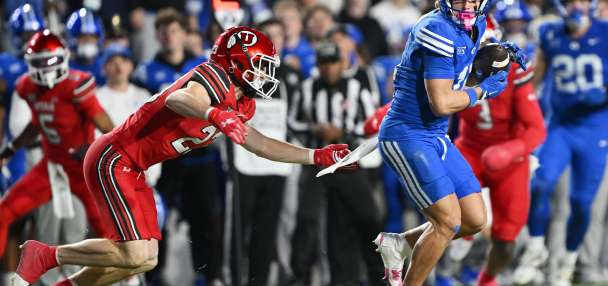Estimated read time: 2-3 minutes
This archived news story is available only for your personal, non-commercial use. Information in the story may be outdated or superseded by additional information. Reading or replaying the story in its archived form does not constitute a republication of the story.
The top of the Pac-12 power structure — the tip-top — is getting a makeover.
By the end of next week, the Pac-12's three-person executive committee, which directs the agenda for the full board of presidents and chancellors, will have a new leader and a new member.
Washington president Ana Mari Cauce takes over as chair — the boss of the bosses — on July 1. She slides into the role held by Oregon president Michael Schill, whose tenure on the executive committee comes to a close.
Stanford president Marc Tessiere-Lavigne is next in line (based on seniority) and will fill Schill's vacancy on the committee.
The third spot will remain occupied by Washington State president Kirk Schulz, who has agreed to stay on for another year despite leaving his campus position. (Schulz will oversee the entire WSU system, not just the Pullman branch.)
So the most important group within the Pac-12 governance structure will have a heavy Northwest lean with Cauce and Schulz, plus Stanford's Tessiere-Lavigne.
What should we make of the changes?
First, the backdrop:
Later this year, the Pac-12 will begin negotiating its next media rights contracts, which are vital to the future of the conference.
We have no doubt that commissioner George Kliavkoff will offer the most pragmatic advice and the best possible options — his hand could be limited — but the commissioner doesn't make the decisions.
Those are left to the full board, which takes its lead from the executive committee.
Now, the Hotline views every strategic decision made by the Pac-12 through the same lens: How does it affect football?
Our evaluation of the revised executive committee is no different.
Cauce has shown no signs — at least publicly — of being a staunch advocate for football. The extent of her support feels externally driven, rather than inherent. (That said, the road taken becomes moot if she reaches the finish line.)
We should assume the same for Stanford's Tessiere-Lavigne, especially given the university he serves.
However, the other member of the executive committee, Schulz, likes football, knows football and intrinsically understands the campus-wide benefits that come with football success.
He has worked in the SEC (Mississippi State) and the Big 12 (Kansas State) and represents the Pac-12 on the CFP's Board of Managers, the final authority on expansion.
He's one of the few Pac-12 presidents with a strategic grasp of the landscape.
Fans should be confident that Schulz and Kliavkoff, who have worked together closely on playoff issues, will view all strategic decisions, including the media rights deal, with a football-first perspective.
When it comes to Cauce, Tessiere-Lavigne — and the rest of the Pac-12 board in its 2022-and-beyond configuration — we recommend cautious optimism.
For this conference, that's as much as any fan could ask.








